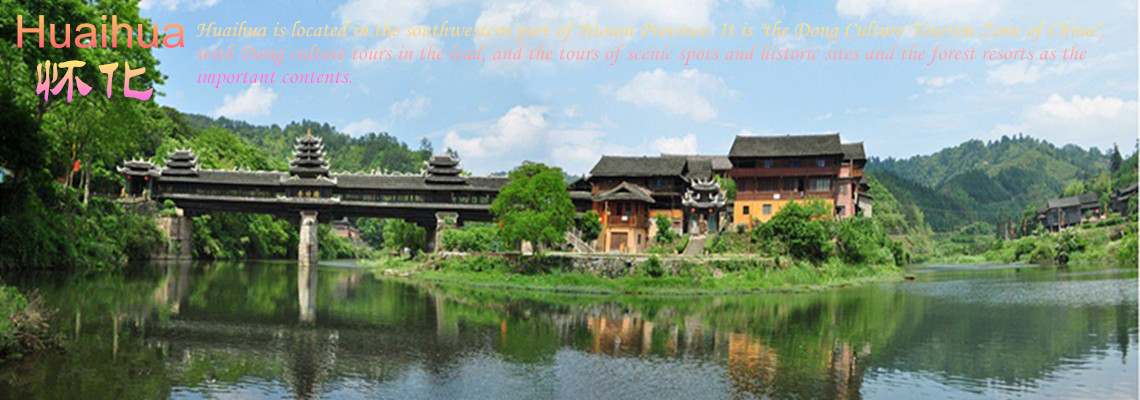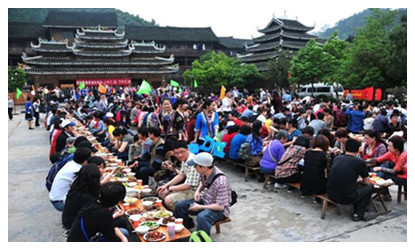Skype: neodalle-travel
Tel: +86 135 7447 2266
E-mail: sales@visitaroundchina.com

 which coincidentally means “passageway” or “thoroughfare”–is home to dozens of Dong ethnic villages. The region of Tongdao, virtually unknown to Western and Chinese tourists is the right place for a natural scenic drive through the Hunanese countryside which is dotted with ancient Dong drum towers and centuries-old Wind and Rain bridges.
which coincidentally means “passageway” or “thoroughfare”–is home to dozens of Dong ethnic villages. The region of Tongdao, virtually unknown to Western and Chinese tourists is the right place for a natural scenic drive through the Hunanese countryside which is dotted with ancient Dong drum towers and centuries-old Wind and Rain bridges.Tongdao Dong building
The building is made in Luoyue railing style. It also adopts Chu-style architectural features. It is exquisite in craftsmanship, delicate in structure, beautiful in shape, with distinctive features. It does not use a single nail or rivet. Among them, the drum tower, village gate and wind and rain bridges are the most outstanding. It can be called “three treasures” of Dong architecture. There are totally 7 units and 15 points of cultural heritage under national protection, and 7 units of heritages under provincial protection. It is one of the counties in Dong living areas with the most and best preserved folk architectural culture.
Drum Tower is a unique symbol of Dong village, and a symbol of the Dong culture. It is a place for mass gathering, discussions, rest and recreation. The architectural technology of drum tower is classically associated with the Dong architectural culture. It can be said to “possess both the grace of a pavilion and majesty of a pagoda”. In the precinct of Tongdao County, generally there is one drum tower for one village, and also one drum tower for the families with the surname or a clan. Among them, five drum towers are cultural relics under state protection.
Wind and Rain Bridge is also called Blessing Bridge, Flower Bridge or Wind and Water Bridge. In Dong villages of Tongdao, you will not find a single village without a Blessing Bridge. It is not only a transportation facility of people, but also a spirit to intercept the wind and water and protect the villages. In the Hundred Li Dong Cultural Corridor along the Pingtan River basin, the wind and rain bridge, small or big, can be seen everywhere. Among them nine wind and rain bridges are listed as key cultural relics units under state protection.
 Ask Questions ?
Ask Questions ?